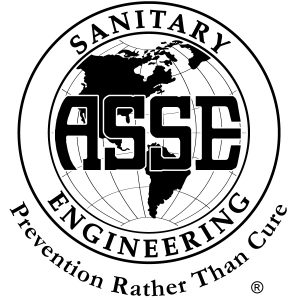Danger of plastic fibers in drinking water
ראשי / Danger of plastic fibers in drinking water
In 83% of recent water tests, billions of people worldwide drink water contaminated with plastic particles!
The question being asked:
If we live on a planet so rich in plastic, then how does it affect our health?
Dozens of tap water samples were taken from countries all over the world and tested by scientists, the results are alarming as 83% of drinking water samples
Contaminated with plastic fibers.
Do we live on a plastic planet? And how does it affect our health?
In the United States, the highest pollution rate was found, with 94% of plastic fibers found in tap water sampled at sites, including congressional buildings, all U.S. environmental protection headquarters buildings and "Trump" towers in New York City. The highest rates of plastic residues were found in Lebanon and India. In the drinking water
In European countries, including England, Germany and France, the infection was at the lowest level "supposedly", why "so-called" because 72% is a devastating result in itself
The average fiber found in 500ml of water ranges from 4.8 in the US to 1.9 in Europe
The new data indicates the extent of microplastic infection anywhere in the world. In the past, the focus was largely on plastic pollution in the oceans, suggesting that people eat microplastics using contaminated seafood.
According to Dr. Cherry Mason, a microplastics specialist at New York State University in Fredonia, "We have enough data from looking at wildlife, and the effects we have on wildlife. "If it affects wildlife, then it probably affects us?"
A study has been published in Ireland that also found microplastic infection in several samples of drinking water taps
And so, we wonder, "We don't know the health impact and that's why we have to follow the term principle, and put in some effort, so we can find out the real risks," said Dr. Ann Marie of the Galway-Mayo Institute of Technology, who conducted the study.
The risks of plastic pollution are in the permanent pollution of the natural environment!
There are two major concerns: very small plastic particles and pathogenic chemicals or bacteria that microplastics can carry and / or contain. If there is fiber that is a hiding place and type of "drive" it is possible, since we know for sure there are particles that we cannot measure, "and here's the argument" once they are in the nanometer range they can really penetrate the cell and that means they can penetrate the organs, which would be alarming. "Earth analysis captured particles of more than 2.5 microns in size, 2,500 times larger than nanometers
Microplastics can attract bacteria like those in sewers, and some studies have shown that there are more pathogenic bacteria on the microfiber, which is also downstream of wastewater treatment facilities.
Microplastics can both contain and absorb toxic chemicals, and wildlife studies show they are released in the body. Professor Richard Thompson, from the University of Plymouth in the United Kingdom, said: "It was clear very early that the plastic would release the chemicals and that, in fact, the conditions in the gut would allow a fairly quick release." The study showed that microplastics were found in one-third of fish caught in the UK
The extent of global microplastic pollution is starting to become clear, with research in Germany finding fiber and fragments in all 24 beer brands tested, as well as honey and sugar.
In Paris in 2015, researchers discovered airborne microplastic flakes, which they estimated were 3-10 tons of fiber in the city each year, and that it was also present in homes of the people in the city
This study led Frank Kelly, professor of environmental health at King's University College London, to announce a 2016 UK parliamentary inquiry: "If we inhale, they may provide chemicals to the lower parts of our lungs and maybe even our bloodstream." Kelly Guardian said the study was urgently needed to determine whether ingesting plastic particles was a health risk
In current water systems and in regular treatment, no health results can be obtained because they are not intended for such a filtration level, and certainly not in current water systems, since standard treatment does not filter the whole level of microplastics, there is really no place where 100% pollution can be said, but in terms of fiber, the diameter is 10 microns, so this is a very low and unusual area to search and find such a filtering level in our drinking water systems
Bottled water is not a free alternative to microplastics for tap water. Since bottled water is also found in several microplastics residual samples, according to tests conducted in commercial water bottles tested in the US for the study
38 million pieces of plastic waste is found in the unpopulated South Pacific
Almost 300 megawatts of plastic is produced each year, with only 20% recycled or burned, so that eventually the microplastics are emitted into the dry air and sea. Reports prove 8.3 billion tons of plastic have been produced since 1950, so researchers agree and warn that plastic waste has become a huge hazard anywhere in the world
We are slipping more and more into ecosystems in plastic and I am very worried that
" there may be all kinds of negative and unwanted effects, and when we find out just once too late it will be too late,
" said Professor Roland Gayer of the University of California and Santa Barbara, who led the study
Mahon said the new tap water analyzes are raising a red flag, but more work is needed to replicate the results, find the sources of the infection and assess the potential health effects
She said plastics are very useful, but waste management must be drastically improved:
"We need plastic in our lives, but we do the damage mainly by throwing them in very careless ways"
Since you as a customer you have read so far so ……
… We have a small question to ask. More people are reading and supporting our independent and investigative reports than ever before. And unlike many news organizations, we have chosen an approach that allows us to keep our journalism accessible to everyone, regardless of where they live or what they can afford.
There is really no place where we can say that we capture all 100%
But in terms of fiber, the diameter is 10 microns!
So, it would be really unusual to find a filtration level in drinking water systems "
What cannot be said about the Lotus Filter, because the researchers did not know Tipa Tech when they wrote this article.










